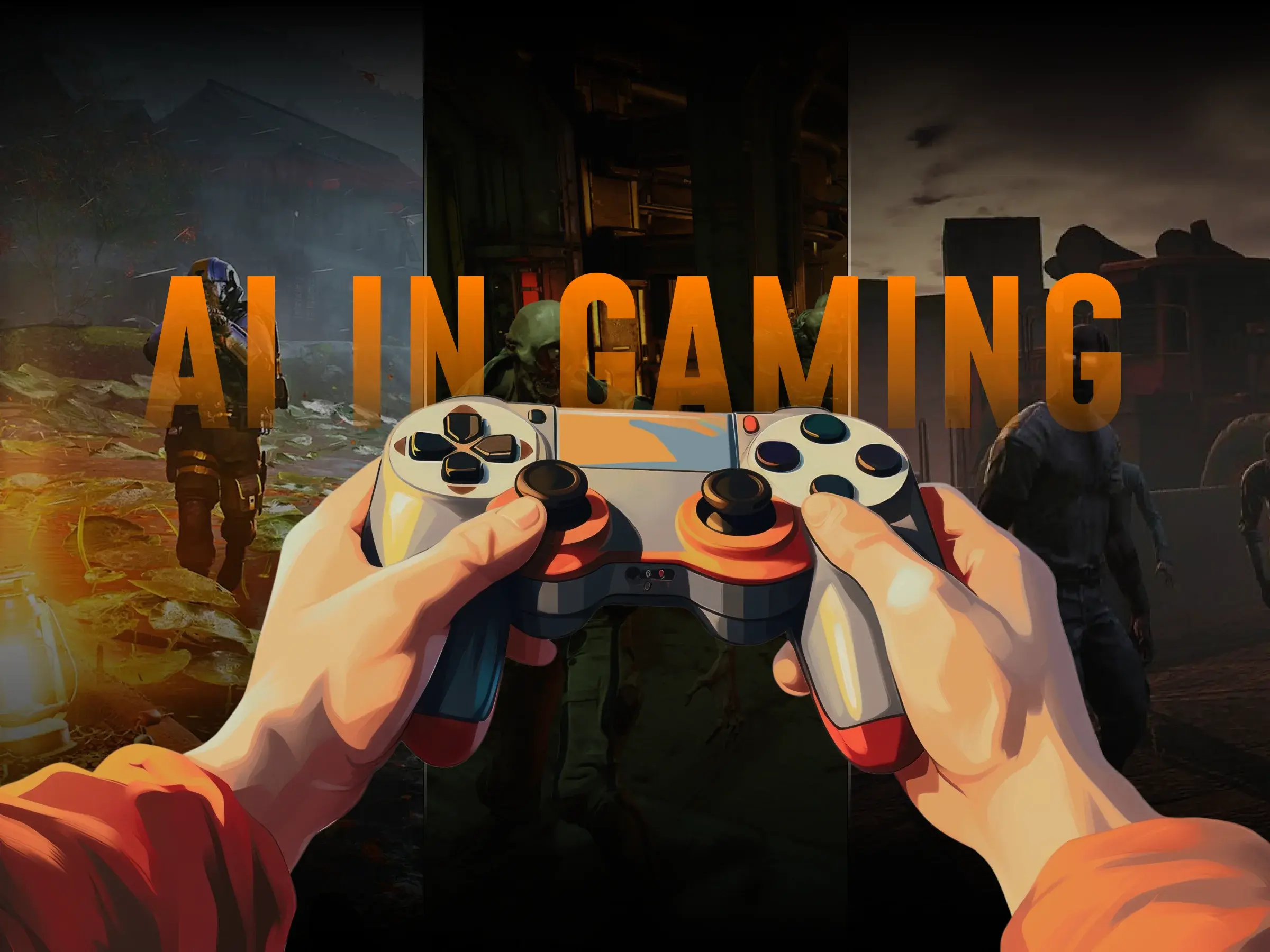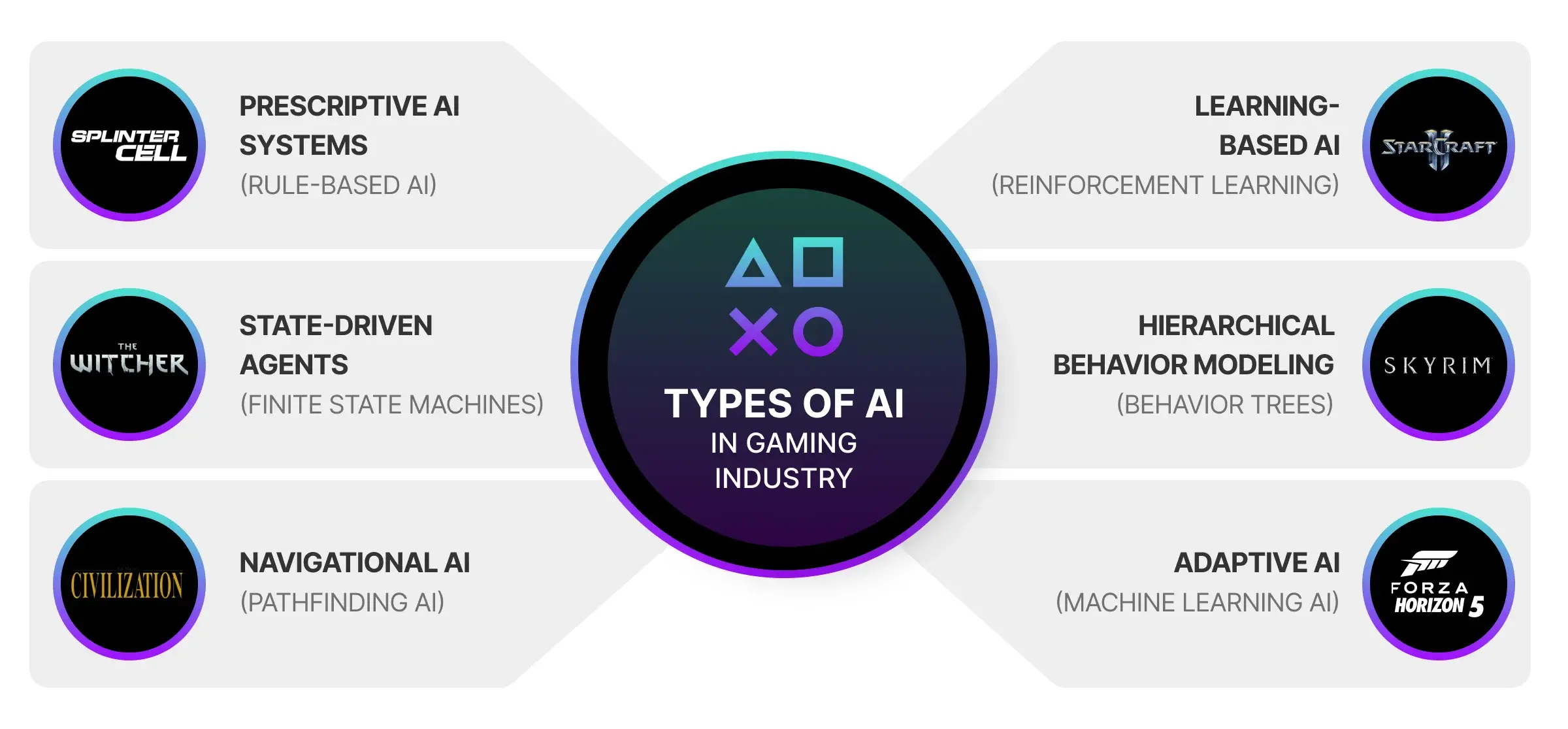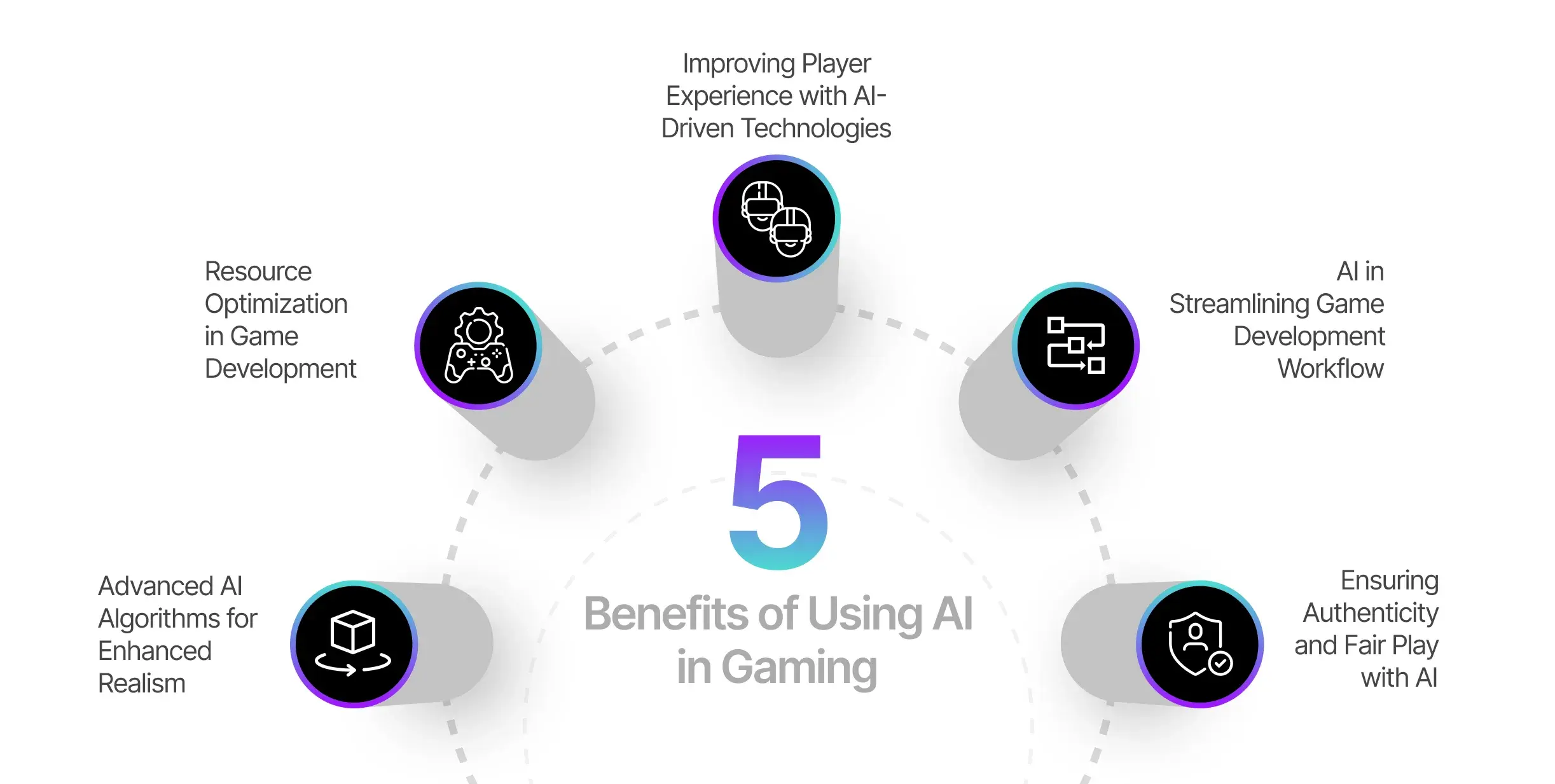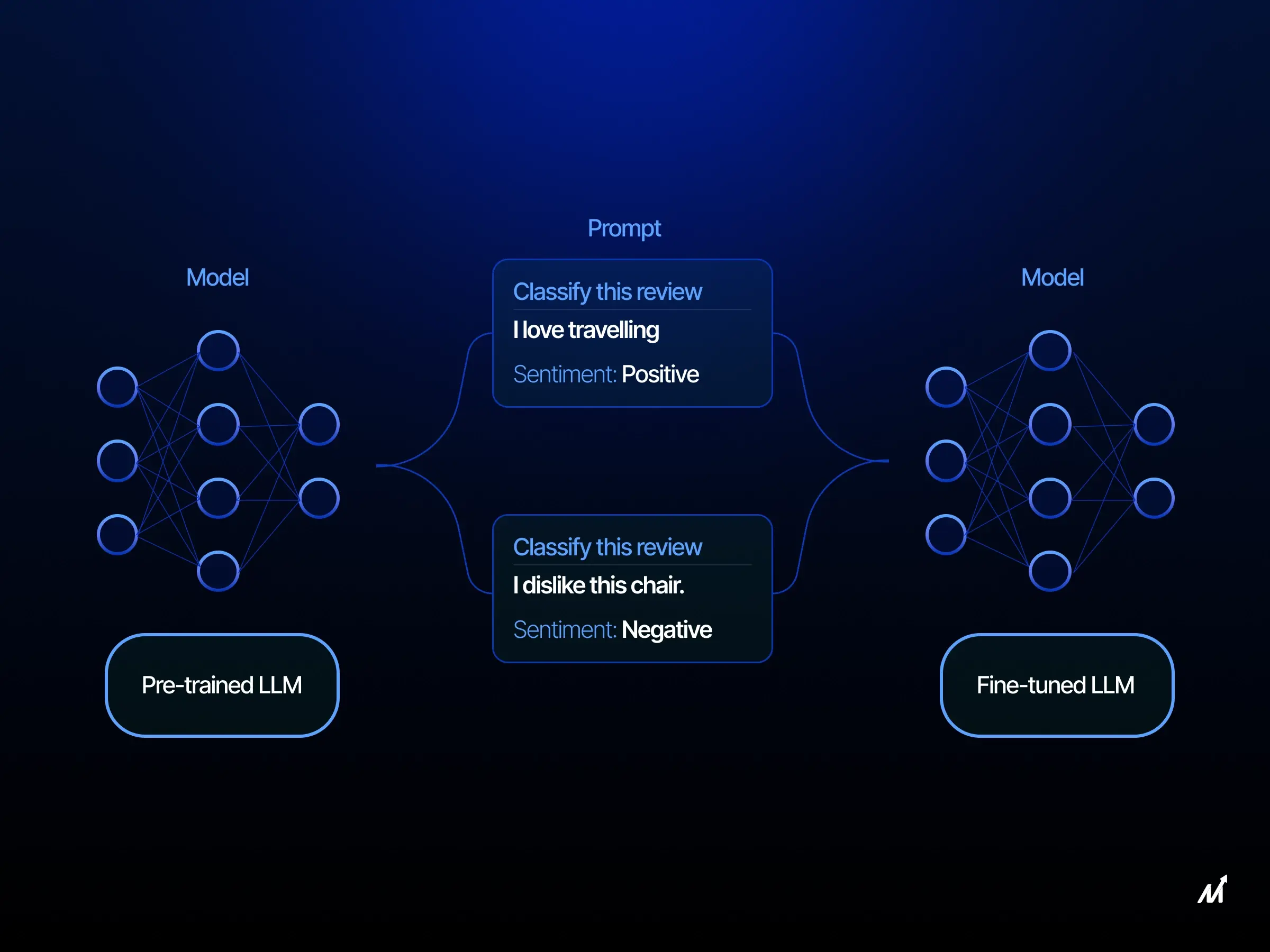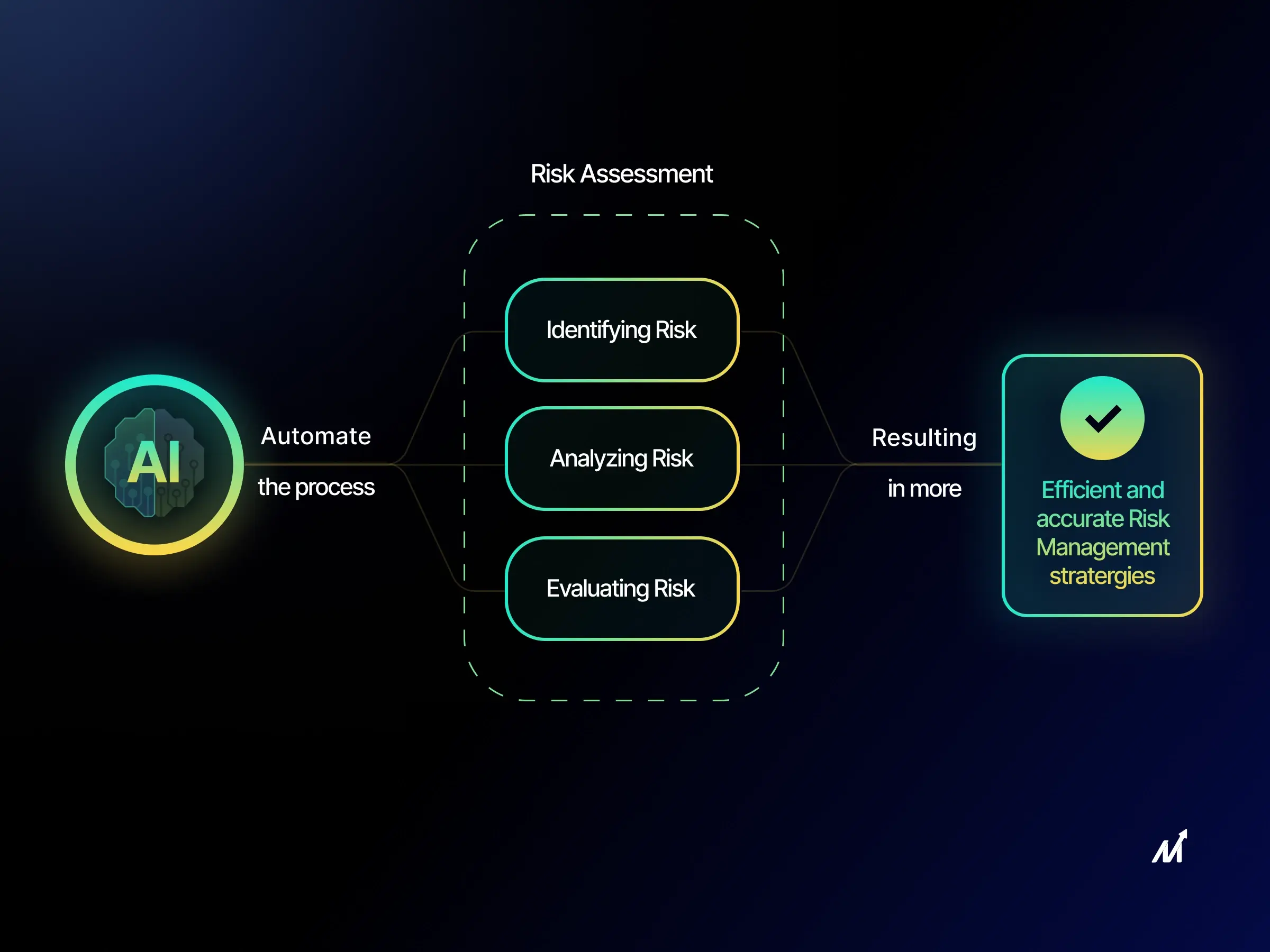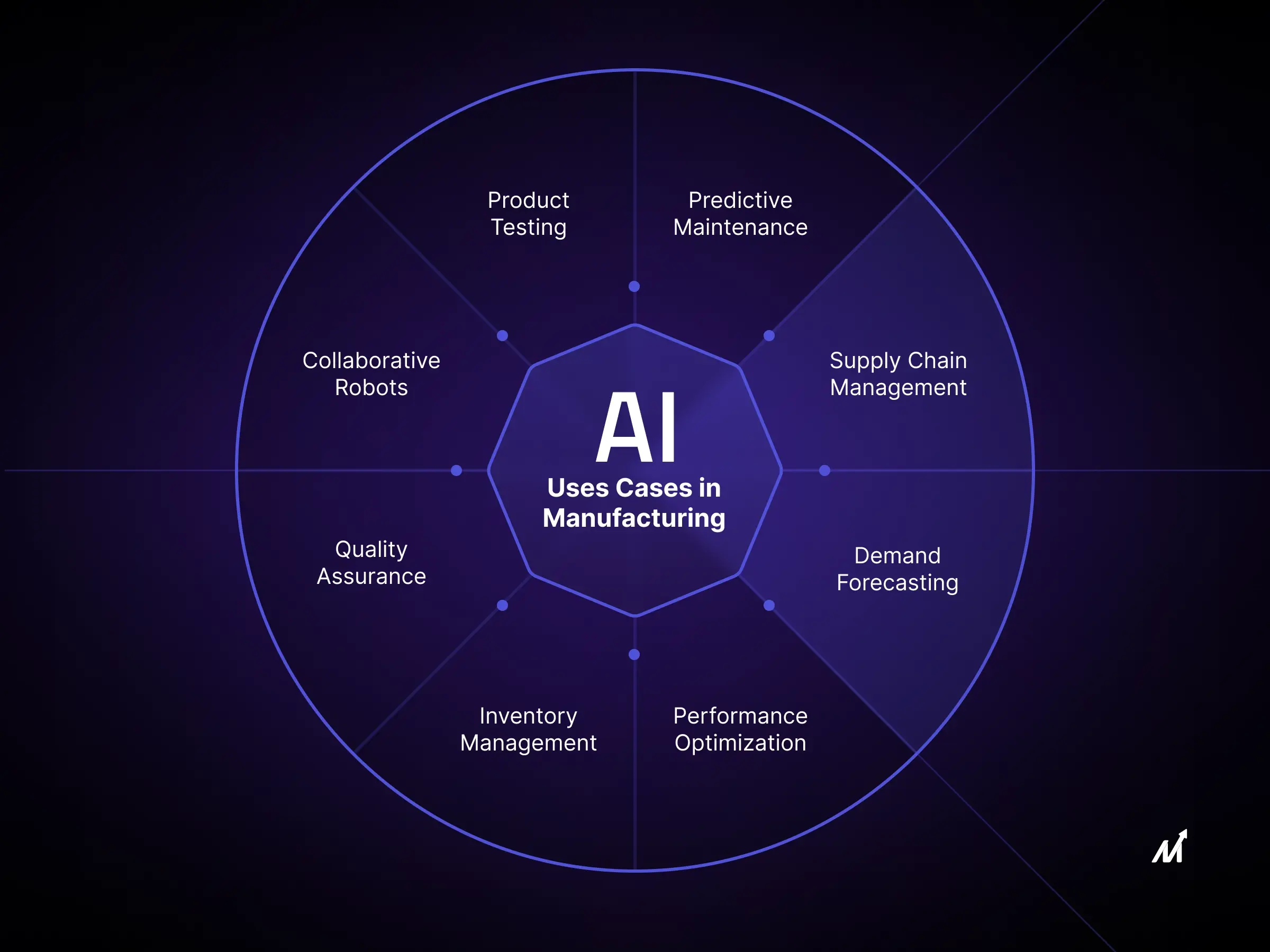The gaming industry has undergone a remarkable transformation, largely attributed to advancements in artificial intelligence (AI). In fact, 99% of gaming companies plan to use AI, and 87% of them are already doing so. This evolution extends beyond the mere inclusion of AI characters in games, focusing on fostering interactivity within the gaming experience.
Artificial Intelligence has significantly impacted various domains, including healthcare, education, and e-commerce, revolutionizing them. This transformative journey began in the gaming industry, a sector that has been pivotal in the evolution of AI.
Evolution of AI in Gaming
Tracing the roots of AI in gaming, it can be noted that the initial use of AI dates back over seventy years. In 1952, Arthur Samuel from IBM developed a Checkers program. This program was designed to analyze and learn from each move, progressively enhancing its gameplay.
Over the past decade, the emphasis on video games has shifted from solely focusing on high-quality graphics to demanding more interactive gameplay. This shift is evident in EA Sports’ FIFA 2017, which utilized AI to simulate team morale boosts through fan chants, enhancing player engagement.
Realizing AI’s gaming potential, investment firms like Amadeus Capital Partners and Passion Capital have supported gaming companies like Prowler.io. These companies focus on developing AI agents capable of learning and adapting behavior based on player interactions, offering a more dynamic gaming experience.
Augmented reality, powered by AI, as seen in games like Pokemon, has introduced a new dimension to gaming, blending virtual elements with the real world. Similarly, AI’s integration in casino and online gambling games has led to more spontaneous and less predictable gaming environments.
The synergy between AI and gaming is so profound that it extends to astronaut training simulations. NASA’s Station Space Walk Game, an AI-driven simulation, prepares astronauts for space missions. This game, also accessible to the public, offers a realistic experience of the space station.
AI algorithms are often embedded in non-player characters (NPCs), enabling them to mimic human-like intelligence and behavior, enriching the gaming experience with responsive and interactive elements.
Looking towards the future, the role of AI in gaming is poised for further advancements.
Prospective developments include:
- AI-enhanced cloud-based gaming
- Blockchain-based gaming
- Voice or audio recognition-based games
- Integration with wearable technology and Virtual Reality (VR) gaming
These advancements indicate a continued trajectory of innovation, with AI playing a central role in shaping the gaming industry’s future.
Analysis of Advanced AI in the Video Gaming Industry
Integrating Artificial Intelligence (AI) technologies in the video game industry has ushered in a new era of immersive and personalized gaming experiences. This analysis delves deeper into the AI applications in gaming, showcasing their profound impact on the industry.
1. Advanced Non-Player Characters (NPCs) Powered by AI
In video games, AI has revolutionized the development of NPCs. These characters are no longer scripted entities but are powered by sophisticated AI algorithms such as machine learning models and neural networks. These algorithms enable NPCs to exhibit behaviors and decision-making skills closely mimicking human players. They analyze in-game situations and player interactions and adapt their strategies, providing each player with a unique and dynamic experience. For instance, Electronic Arts’ SEED division employs reinforcement learning, a type of machine learning where NPCs learn and improve strategies through trial and error, much like human learning.
2. AI-Driven Visual Enhancement and Upscaling
AI technologies, particularly in upscaling, have transformed the visual aspect of gaming. AI upscaling involves deep learning techniques, where convolutional neural networks (CNNs) analyze low-resolution images and intelligently upscale them to higher resolutions without losing detail. This enhances the visual appeal of older games and allows high-quality graphics on lower-end hardware. NVIDIA’s DLSS is a leading example. AI-powered algorithms analyze and reconstruct game scenes in real-time, delivering high-resolution output with remarkable detail and smooth frame rates.
3. Procedural Content Generation (PCG) with AI
PCG in gaming has been revolutionized by AI, automating the creation of diverse game assets. AI algorithms in PCG analyze large datasets of existing game content to understand patterns and styles. Using generative models, these algorithms can create new game assets – ranging from textures and terrains to story elements – that are unique and consistent with the game’s aesthetic. AI Dungeon 2, leveraging OpenAI’s GPT-3, showcases this by generating unique narrative content based on player inputs, using a model trained on a vast corpus of text data.
4. Player-Experience Modeling (PEM) Using AI
PEM involves sophisticated AI modeling to predict and adapt to player behaviors and preferences. This is achieved through machine learning techniques that analyze player data, such as gameplay style, decision-making patterns, and reactions to game scenarios. The AI models then adjust game elements dynamically, creating a tailored experience ranging from modifying game difficulty to altering narrative paths based on the player’s profile.
5. AI in Data Mining and Real-Time Analytics
The vast amounts of data players generate are analyzed using AI and machine learning algorithms for valuable insights. These algorithms can process large datasets rapidly, identifying patterns in player behavior, game performance issues, and emerging trends. Tools like DemonWare utilize these technologies for real-time analytics, enabling developers to understand player behaviors and optimize game performance and resource allocation based on these insights.
6. Player Sentiment Analysis with AI
AI-driven sentiment analysis tools use natural language processing (NLP) to evaluate player feedback. These tools analyze text data from reviews, forums, and social media, identifying sentiment and key themes in player feedback. AI allows developers to gain insights into player preferences and improvement areas. For example, Riot Games uses AI tools to analyze player discussions on League of Legends, guiding them in-game updates and enhancements.
7. AI in Cheat Detection for Multiplayer Games
AI is crucial in maintaining fairness in multiplayer games by detecting cheating. This involves using anomaly detection algorithms, a branch of machine learning, to analyze player data and identify patterns that deviate from normal gameplay, indicating potential cheating. Games like PUBG employ these AI techniques to ensure a fair and competitive environment by proactively identifying and addressing cheating.
8. AI Tools in Game Testing and Debugging
AI tools in game testing employ automated algorithms for code analysis, bug detection, and quality assurance. These tools use static and dynamic analysis techniques to scan through game code, identifying anomalies, potential bugs, and performance issues. By automating these processes, AI tools significantly reduce the time and resources required for game testing, ensuring a more polished final product.
9. Interactive AI-Powered Virtual Assistants in Gaming
AI virtual assistants in gaming utilize advanced NLP and machine learning to interact with players. These assistants understand and respond to player queries in natural language, providing assistance and enhancing the gaming experience. They learn from player interactions, improving their responses and assistance over time, increasing user engagement and game enjoyment.
Loved reading this. Also, read Generative AI applications in various industries
Types of AI in the Gaming Industry
Here is the list of the most common AI in gaming techniques:
1. Prescriptive AI Systems (Rule-based AI)
This form of AI operates on a framework of predetermined rules and conditions that dictate NPC behavior. Game developers script specific scenarios and responses, providing a predictable and consistent behavior pattern for NPCs. For example, in a stealth-based video game like “Splinter Cell,” NPCs react to the player’s presence by following set rules, such as sounding an alarm or searching the area if they detect the player. This AI is fundamental in games where predictable and structured NPC responses are essential for the gameplay mechanics.
2. State-Driven Agents (Finite State Machines)
Finite State Machines (FSMs) model NPC behavior by segmenting it into distinct states, with transitions triggered by specific events. Each state embodies a particular action or behavior. In a game like “The Witcher,” NPCs can have states like ‘patrolling,’ ‘engaging in combat,’ or ‘pursuing the player.’ The transition between these states is triggered by in-game events, such as the player being detected or engaging in dialogue with the NPC. FSMs are pivotal in creating dynamic and responsive NPCs.
3. Navigational AI (Pathfinding AI)
This AI focuses on calculating the most efficient paths for NPCs within the game environment. Algorithms like A* determine the shortest and most obstacle-free routes. In games like “Civilization,” pathfinding AI enables units to navigate complex terrains when moving between points, choosing routes that avoid natural barriers and enemy territories. This aspect of AI is crucial for games with intricate environments where strategic movement is key.
4. Adaptive AI (Machine Learning AI)
Machine Learning AI introduces adaptability and learning capabilities to NPC behavior. This AI evolves based on past experiences and data. In a racing game such as “Forza Horizon,” the AI opponents adapt their driving techniques based on player behavior, learning to navigate tracks more efficiently and choosing better racing lines as the game progresses. This form of AI provides the player with a dynamic and evolving challenge as NPCs become more proficient.
5. Hierarchical Behavior Modeling (Behavior Trees)
Behavior trees are used for modeling complex NPC decision-making. They consist of hierarchical nodes representing actions, conditions, or states. For example, in a game like “Skyrim,” NPCs might use behavior trees to decide whether to engage in combat, flee, or offer dialogue based on the player’s actions and the NPC’s current state. This method allows for sophisticated and varied NPC behaviors, adapting dynamically to the game’s context.
6. Learning-Based AI (Reinforcement Learning)
NPCs are programmed to learn from their actions by receiving rewards or penalties. This method is evident in strategy games like “StarCraft,” where AI opponents adjust their strategies over time, learning which tactics yield better results against the player’s playstyle. NPCs adapt by prioritizing certain actions over others, leading to a more challenging and unpredictable gameplay experience.
By incorporating these AI techniques, video games offer a more immersive, challenging, and realistic experience. NPCs behave increasingly lifelike, reacting to the player’s actions and the environment in both believable and engaging ways, thus enhancing the overall gaming experience. Now let’s understand the advantages of using Ai in Gaming.
Also, read how to develop an AI system.
Benefits of Using AI in Gaming
Outlined below are several advantages of AI in the gaming sector that are particularly noteworthy for businesses and enterprises:
1. Advanced AI Algorithms for Enhanced Realism
Modern games increasingly utilize sophisticated AI algorithms, especially in genres like combat and racing. These algorithms enable Non-Player Characters (NPCs) to exhibit behaviors that learn and adapt based on player interactions. This adaptive learning, powered by AI techniques such as machine learning and neural networks, contributes to a more realistic and engaging gaming experience.
2. Resource Optimization in Game Development
The traditional game development process is resource-intensive, requiring significant time, manpower, and financial investment. AI streamlines this process by automating certain tasks, like procedural content generation, where AI algorithms can create complex environments and scenarios. This conserves resources and accelerates the development cycle, allowing for quicker market entry.
3. Improving Player Experience with AI-Driven Technologies
The incorporation of AI in conjunction with AR/VR technologies has been instrumental in elevating the gaming experience. AI algorithms can generate dynamic game environments, realistic physics, and interactive storylines. These technologies enable features like realistic audience reactions, intricate weapon dynamics, nuanced vehicle movements, and sophisticated sound effects, all contributing to an immersive gaming environment.
4. AI in Streamlining Game Development Workflow
AI has a significant role in various phases of game development, from conceptual design to post-production. In the animation and graphics enhancement phase, AI can assist in creating more lifelike characters and environments. During the quality assessment, AI bots are utilized for thorough testing, surpassing the limitations of traditional human-based quality assurance. This ensures a more reliable end product but also aids in identifying and rectifying potential issues more swiftly.
5. Ensuring Authenticity and Fair Play with AI
In an industry where authenticity and security are paramount, AI plays a vital role in maintaining the integrity of the gaming experience. AI-driven systems are adept at detecting and mitigating fraudulent activities, ensuring that players adhere to fair play standards. By analyzing player behavior and patterns, AI systems can identify anomalies indicative of cheating or fraud, thereby preserving the game’s integrity.
Exploring the Future of AI in Gaming
From enhancing game design to redefining player experiences, AI’s role is pivotal and ever-expanding. Let’s unveil the future it promises.
1. AI-Enhanced Cloud Gaming
Cloud gaming is transforming the industry by streaming games directly from the cloud. This eliminates the need for hefty downloads or high-end hardware on the player’s end. This means a broader reach for businesses as players with less powerful devices can access games. It also opens up new revenue streams through subscription models and cloud-based services. The challenge lies in ensuring seamless streaming and low latency to provide a high-quality gaming experience.
2. Blockchain Integration in Gaming
Blockchain technology introduces a novel dimension to gaming. It’s more than just cryptocurrency; it’s about creating a secure, transparent environment where players own digital assets like skins or characters. For gaming enterprises, this means an opportunity to build games with a new level of player investment and engagement. However, it requires careful integration to ensure that the blockchain elements enhance the gaming experience without overwhelming it.
3. Voice and Audio Recognition Technologies
Voice and audio recognition are set to make games more interactive. Imagine controlling game actions or navigating menus with just your voice. This technology can make games more accessible, especially for those with physical disabilities. For businesses, it means designing more inclusive games and potentially opening up to a wider audience. The challenge here is to develop accurate and responsive voice recognition systems that understand various accents and speech patterns.
4. Wearable and VR Gaming Technologies
The rise of AR, VR, and MR technologies creates immersive gaming experiences. Devices like the Oculus Quest offer high-quality VR without needing a PC. For gaming businesses, this means exploring new game designs specifically built for VR, offering players a unique and immersive experience. The key here is balancing innovation in game design with the current limitations of VR hardware, such as motion sickness and the need for a relatively large play area.
5. Mobile Gaming Advancements
The mobile gaming market is expanding rapidly. Modern smartphones can now support games with high-resolution graphics and complex gameplay. For businesses, this means a huge market of players who prefer gaming on the go. The focus here should be optimizing games for various devices, ensuring they run smoothly on high-end and mid-range phones. Designing engaging games that respect the typically shorter mobile gaming sessions is also crucial.
Best Practices for Adopting AI in Gaming
Adopting AI in gaming involves complex technical considerations to ensure a seamless and secure integration. Below are five best practices for incorporating AI into gaming, focusing on data security, optimization, and player experience.
1. Robust Data Management and Security
As AI systems in gaming often require large datasets for training and operation, robust data management is crucial. Developers should implement secure data storage solutions, adhering to industry standards like ISO/IEC 27001 for information security management. Encryption of data both at rest and in transit is essential. Additionally, adopting a zero-trust security framework can mitigate risks, requiring verification for every person and device trying to access data within the network. Regular audits and compliance checks with data protection regulations such as GDPR or CCPA are also necessary to protect player data and privacy.
2. Efficient AI Model Training and Deployment
Training AI models for gaming requires significant computational resources. Utilizing cloud-based GPU instances can offer scalable and cost-effective solutions for training complex models. Containerization tools like Docker can be used for consistent AI model deployment across various platforms, ensuring that the gaming experience remains uniform. Kubernetes can manage these containers to automate scaling and management efficiently. Leveraging edge computing can reduce latency for real-time AI applications like NPC behavior or procedural content generation.
3. Personalization through Machine Learning
AI can enhance player experience by personalizing game content. Implementing machine learning algorithms that analyze player behavior and preferences allows dynamic content adjustment. Techniques like reinforcement learning can be used where AI agents learn optimal behaviors based on player interactions, enhancing NPCs’ realism and adaptability. Ensuring data anonymization in this process is vital to maintaining player privacy.
4. AI for Game Testing and Quality Assurance
AI can automate many testing processes, identifying bugs and performance issues more efficiently than traditional methods. AI-driven predictive analytics can anticipate game performance across various hardware configurations, optimizing resource allocation. Implementing Natural Language Processing (NLP) can analyze player feedback from forums and social media, providing insights into player satisfaction and areas for improvement.
5. Ethical AI Implementation and Bias Mitigation
It’s essential to address the ethical implications of AI in games. This includes ensuring AI does not promote harmful stereotypes or biases. Utilizing diverse training datasets and regularly auditing AI algorithms for bias can mitigate these risks. Establishing an ethical AI framework and adhering to principles like transparency, accountability, and fairness in AI decision-making processes is crucial. Additionally, game developers should be transparent with players about how AI is used in games and how player data is processed.
Start Your Gaming Ventures with Markovate’s AI-Powered Innovations
At Markovate, we specialize in transforming visionary gaming concepts into reality for budding startups and established industry leaders. Our focus is not just on development but on nurturing your idea from inception to a thriving product in the market. We ensure a seamless journey enriched with our comprehensive post-deployment support.
Our forte in AI development has enabled us to set benchmarks in delivering gaming experiences that resonate globally. We take pride in our capability to bring diverse gaming narratives to life.
Delve into our expansive array of gaming development services:
- Tailoring State-of-the-Art Mobile Games
- Forging Ahead in Web3 Gaming Realms
- Sculpting Advanced AR/VR Gaming Experiences
- Engineering Rich 3D Gaming Worlds
- Forging Pathways in Metaverse Gaming
Our team is adept in agile methodology, ensuring that our gaming solutions are innovative and responsive to the dynamic needs of both iOS and Android platforms, including cross-platform compatibility.
If you’re poised to make a mark in the AI-powered gaming landscape, Markovate is your ally. We’re dedicated to crafting your gaming idea into an exceptional, market-leading product, showcasing our unwavering commitment to outstanding game app development.
FAQs: AI in Gaming
1. What are the key benefits of integrating AI in gaming?
AI in gaming enhances user experience by providing realistic and adaptive gameplay, personalized content, and improved game design. It enables games to learn from player behavior, offering a more dynamic and engaging experience.
2. How does AI impact game development?
AI streamlines game development by automating character design, level creation, and testing tasks. It allows for more complex and intelligent in-game scenarios, reducing development time and costs while increasing creativity and innovation.
3. Can AI in gaming improve player engagement?
Absolutely. AI-driven games adapt to individual player styles, offering tailored challenges and interactions. This personalization keeps players engaged and invested in the game, leading to higher retention rates and a more satisfying gaming experience.
4. What role does AI play in mobile gaming?
In mobile gaming, AI contributes to creating more immersive and interactive experiences. It enables features like voice recognition, responsive game environments, and adaptive difficulty levels, making mobile games more sophisticated and appealing.
5. Is AI essential for the future of gaming?
Yes, AI is crucial for the future of gaming. It’s a driving force behind innovative gameplay, realistic graphics, and interactive storytelling. AI’s ability to learn and adapt ensures that future games will be more engaging, realistic, and personalized, catering to the evolving demands of players.

